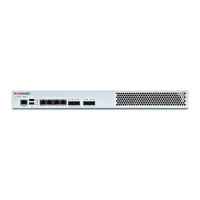Introduction Scope
l
For implementation of the network topology you planned, topic [Configuring Network Interface (Network Setting)]
and its sub-topics give the necessary information about the configurations of network deployments on Web UI.
FortiWAN's diagnostic tools is helpful for trouble shooting when configuring network, please refer to topic
[Diagnostic Tools] .
Functions
l After installing FortiWAN into your network, the next step is to configure the major features, load balancing and fail-
over, on FortiWAN. Topic [Load Balancing & Fault Tolerance] and its sub-topics contain the information about
performing FortiWAN's load balancing and failover mechanisms for incoming and outgoing traffic, virtual servers
and single-session services.
l
Topic [Optional Services] gives the information about configurations of FortiWAN's optional services, such as
Bandwidth Management, Firewall, Connection Limit, NAT, SNMP, Cache Redirect, and etc.
Monitoring
l After FortiWAN works a while, related traffic logs, statistics and report analysis might be required for monitor or
trouble shooting purposes. Topics [Logs], [Statistics] and [Reports] provide the information how to use those logs,
statistics and reports to improve management policies on FortiWAN.
The following topics are covered elsewhere:
l Appliance installation—Refer to the quick start guide for your appliance model.
l Virtual appliance installation—Refer to the FortiWAN-VM Install Guide.
11 FortiWAN Handbook
Fortinet Technologies Inc.

